How to edit a MP3 file in Windows Media Player? An audio file is used for storing sounds and music. The advantage of using an audio file rather than an image or video is that it occupies fewer bytes of storage space. Thus, we can save time and space by creating audio files rather than taking photos or videos while storing the same information. Audio files are made up of sound patterns or waveforms that are translated into audible sounds. If you don't know how to edit a MP3 file in Windows Media Player, please follow this tutorial:
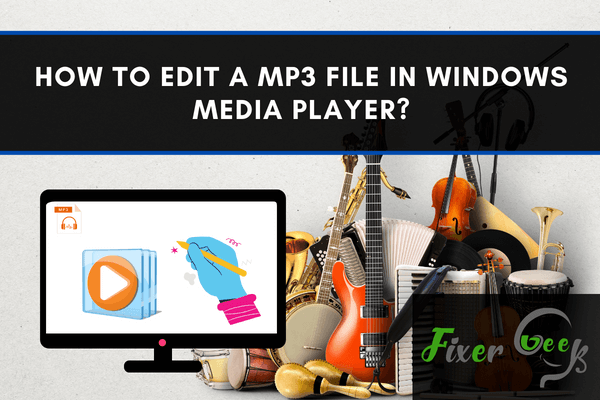
Windows Media Player (WMP) is a built-in media player for Windows devices. This media player serves multiple purposes from playing music to viewing photos and showing video clips. It also has a function to burn music to your blank CD or DVD tapes, which is what the program is famously known for.
The earliest version of Windows OS to include Windows Media Player is Windows 3.1 which was released way back in 1992. Back then, Windows Media Player was formerly called Media Player.
As all long-time Windows users know, it is not possible to edit an MP3 file directly using Windows Media Player. Yes, it is possible to do descriptive editing, such as changing the name, categorizing the file to a genre, and adding an album name to the file. But when it comes to the technical aspect, it is practically impossible. In this case, we will be needing the help of a plug-in application.
“What is a plug-in application?”, you might ask. Well, plug-ins are tandem applications or extensions. They function to provide a specific feature on a particular program. In this case, we will be using a plug-in application to edit an MP3 file using the Windows Media Player.
There are two plug-ins available for Windows Media Player that we can use to edit MP3 files: SRS Audio Enhancement and DFX.
Please take note that these steps are done using a Windows 10 device and a Windows Media Player 12 which is the latest version of WMP.
So, how do we access these two plug-ins? It’s simple. First, open the Windows Media Player by simply clicking your Start button and search for the Windows Media Player Program.

Next, click on the Organize, and from the dropdown select ‘Options..’

Then, go-to the ‘Plug-ins’ tab.
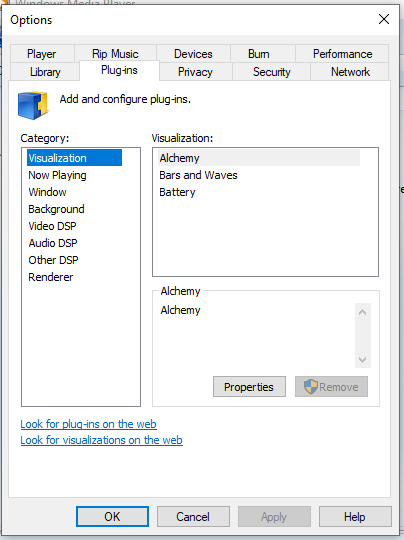
From there, click on “look for plug-ins on the web”.
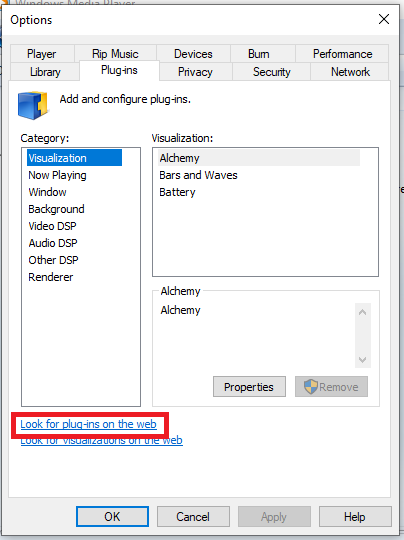
This will redirect you to a Microsoft Support page where you can see all the available plug-ins for Windows Media Player.
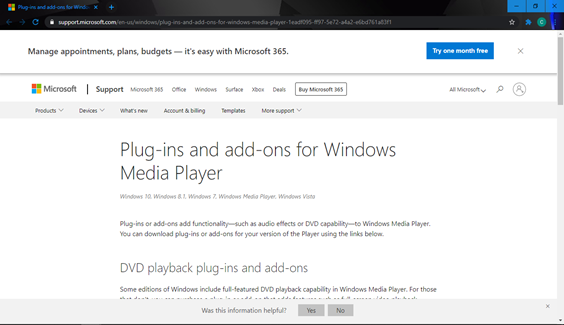
Scroll further down and you can see the Audio Effects (DSP) Plug-ins. These are the extensions you can use to edit your MP3 file.
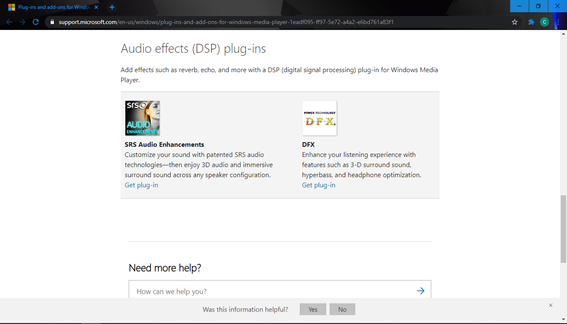
You will need to download one or both of them before you can use any with your Windows Media Player. Fortunately, both applications are free and the instructions are pretty simple to follow.
SRS Audio Enhancement (DTS Sound Unbound)
SRS Audio Enhancement or DTS Sound Unbound is a plug-in you can use to amplify the sound of your music file. The product description states that the plug-in provides a 3D surround sound when used with Windows Media Player.
DFX
DFX from Power Technology promises to boost the sound quality of the music you are playing. When enabled the plug-in can provide better music for the user. The user can then customize these effects by adjusting the Equalizer and adding Effects to the music.
But we still have one more!
Now, this plug-in is available outside the Microsoft support page, but if you’re looking for a plug-in to trim your MP3 file then you will need this.
The WMP Trimmer Plugin 3 can be download for free. After downloading the plug-in, it will automatically appear once you open your Windows Media Player. The image below shows how it would look once downloaded. Open the file via the extension by clicking on ‘Open Media File’.

You can simply adjust the parts you want to cut and click ‘Trim’ to cut that part out. You can utilize the markers for better results.
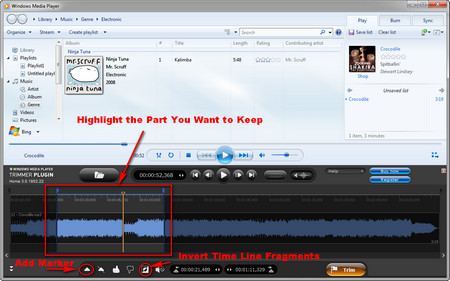
This just goes to show how limitless are the possibilities with technology. One offset may not be the end of the road. We just need to look at different options we have to proceed with what we want.
Summary: Edit a MP3 file in Windows Media Player
- Do a Google search for "Windows Media Player" and click on it to open the program.
- Go to the bottom left corner and click on "Library".
- Go to the bottom left corner and click on "Music".
- Go to the bottom left corner and click on the MP3 file you want to edit.
- On the home screen, go to the top right corner and click on "Edit".
- A side bar will pop out. Use the controls there to edit your MP3 file.